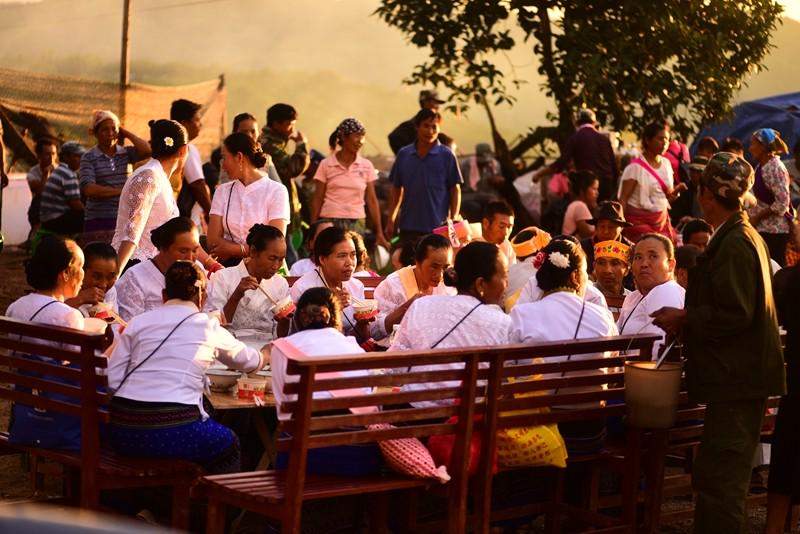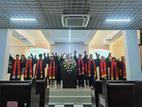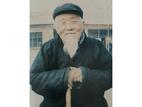Editor's Notes: On November 8, 2017, a 100-year celebration was held at the Manyun Christian Church in Jinghong City, Xishuangbanna, Yunnan Province. For commemorating the 100th anniversary of the introduction of the Gospel for this locality. A few days ago, the Manyun Christian Church published an article about the history and status quo of the church.
I. Church background
In 1910, the American Presbyterians sent four missionaries including Dr. Mason and Mr. Beebe to set up a missionary site in Xishuangbanna. They were recognized by Zhao Pian Ling, the highest lord of Xishuangbanna and Ke Shu Xun, the general director of General Office of Pusi Colonial Border. Moreover, they were given a piece of land on the banks of the Lan Cang River. The land was used to build churches, hospitals, schools, etc. Missionaries brought medicines and some medical facilities, providing accommodation, food, medical services, etc. to people who were dependent and in poverty, and on the other hand, trying to reduce their tax burdens; while spreading Christian doctrine.
Christianity attracted many villagers who were slandered as "Pipa ghosts" and leprosy patients who had been expelled from the village. The missionaries built several tile houses in the shrubs a few kilometers away from the church, and took care of these leprosy patients, forming a village where leprosy patients lived. In the vicinity of the church, a group of so-called "Pipa ghosts" people were gathered, and gradually formed a village. Because the majority of the people who lived there were defiled as ghosts, the village, therefore, was known as the Pipa-ghost Village. Until the early days of the Anti-Japanese War, there were about 40 households and more than 120 people in this village. The first gospel was gradually spreading among the marginal groups of the Dai society: leprosy patients and so-called Pipa-ghosts, who became the first christians in Xishuangbanna.
Dodd, who had served as a missionary in Jinghong, recorded in his book that in January 1919, he baptized a pair of elderly Yi couple. The men used to be a monk. They were smuggled to be able to Fang Gu(a kind of witchcraft that could curse others using a particular poisonous insect). Had it not been Mr. Beebe, they were probably killed. The couple recorded by Dodd were probably the so-called Pipa-ghosts. With the help of Thai missionaries and Yi believers, these missionaries translated the New Testament into Dai language and made the Yi people have their own Bible. With the continuous follow-up of these missionaries, clinics and schools had also been started in Menghai and Mengkuan, etc. In the early days of the Anti-Japanese War, there were more than 300 christians in Xishuangbanna.
After the outbreak of the Anti-Japanese War, the missionaries started returning to their home countries. By 1942, the last group of missionaries withdrawn from Xishuangbanna. The Yi christian church in Xishuangbanna began its own development path. Because of the lack of manpower and corresponding talents, hospitals and schools were gradually closed. Only the church continued to work. In 1952, the church building was stationed by the government as a task force. Later on, the church activities were transferred to the Yi believers' homes. Due to the interference of the "Left" thoughts, the activities were completely stopped in 1957. Until the early 1980s, the Party's national religious policies were gradually implemented, and christian activities were restored step by step. In 1992, in order to solve and meet the need of the religious activities of the christians in Manyun Village, the Jinghong Municipal Government allocated 20,000 yuan to the village of Manyun Village to build a church in the village's vegetable farm. This is where the Mancheng Church is now.
II. The number of believers
The restoration of the Manyun Christian Church was also around 1987. At that time, the church had more than 50 believers. By 1996, there were more than 3,000 believers, including two elders, four preachers, and six deacons. Because of the increase in the number of believers, one church building cannot meet the needs. So in the year of 2000, another building of a city church was built. Now they are two independent churches being operated separately, and neither of them is a simple Dai church. There are currently 1074 believers in the Manyun Christian Church, of which 20% are Yi people, 20% Aka people, the other ethnic groups take 30%, and the Han people account for about 50%.
- Translated by Ze Wang














